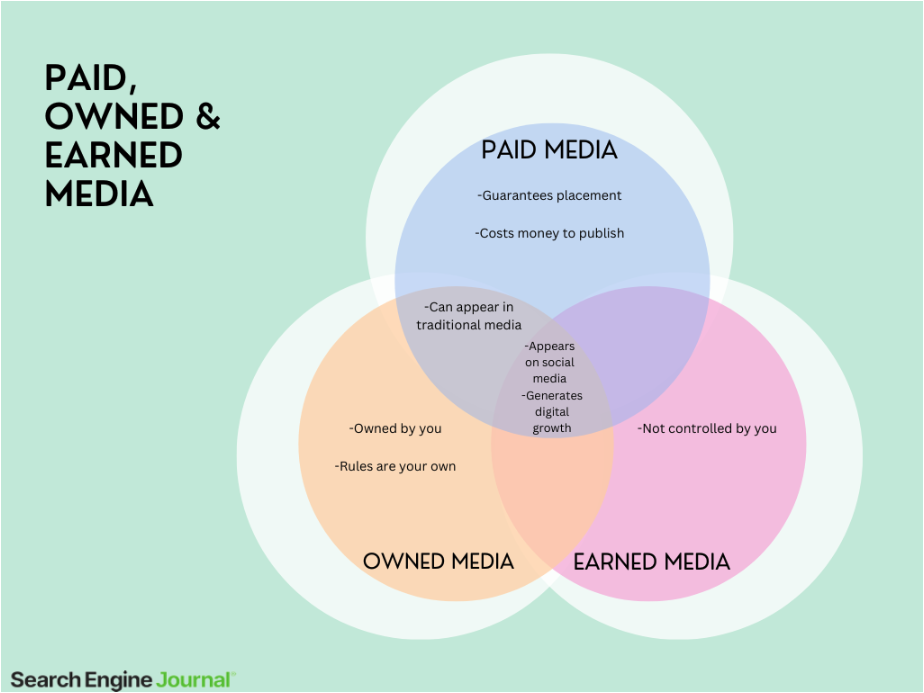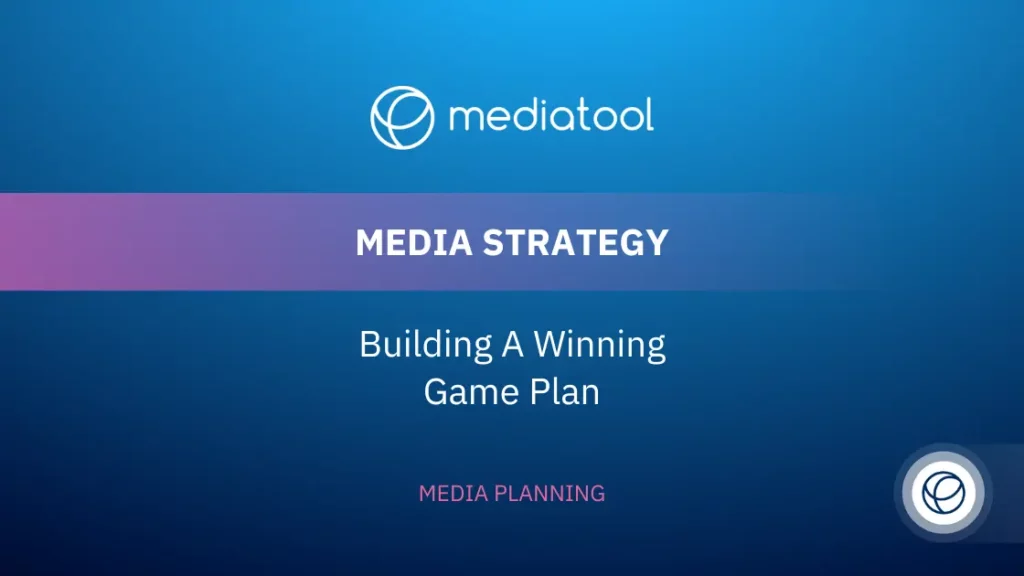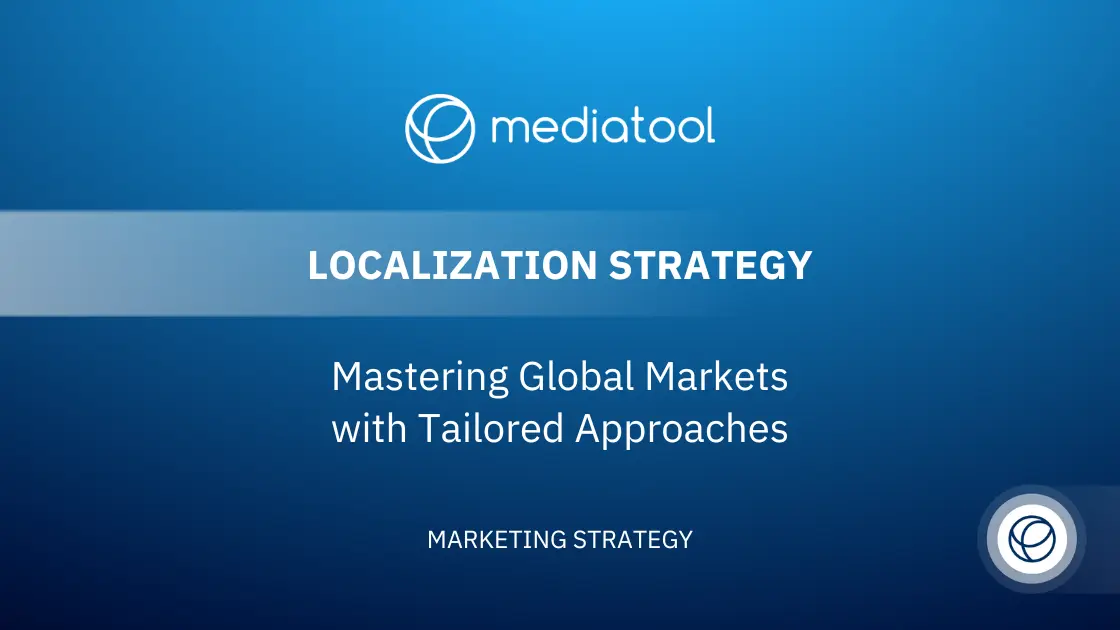Today, those that create an effective media strategy are those that are standing out in the crowded marketplace.
This guide dives into the details of developing a robust media strategy for anyone involved in media planning and buying.
Discover how to target audiences and consumers effectively through a well-thought-out advertising strategy, leveraging the power of visual media and various media platforms. Whether you’re a seasoned professional or new to the field, this guide offers valuable knowledge on creating media plans that resonate with your target audience.
Let’s get into it!
What Is A Media Strategy?
A media strategy is a comprehensive approach to achieving marketing objectives, blending strategic thinking, detailed planning, and a profound understanding of your target audience’s preferences and requirements. It’s far more than just an impromptu concept; it’s a well-crafted plan focusing on three key aspects: identifying your target audience, crafting the core message you wish to convey, and selecting the most effective media channels for message dissemination.
This strategy encompasses various elements such as social media platforms, paid and owned media, as well as advertising campaigns.
It involves careful media planning to utilize different media platforms effectively, including social media networks, online media, and even traditional channels like print ads.
The goal is to increase brand awareness, reach potential customers, and drive them towards a desired action.
In implementing a media strategy, marketers begin by conducting a competitive analysis and leveraging demographic information to fine-tune their target audience.
The media plan may include a mix of paid ads, owned media strategy, and earned media strategy, ensuring the right mix of media types to effectively reach consumers.
Content creation, optimizing for search engines, and focusing on the right message are crucial elements of this strategy.
An effective media plan also considers the marketing budget, media buying, and pay-per-click advertising. By making informed decisions, the marketing team aims to enhance conversion rates and achieve conversion goals.
A media strategy is an essential aspect of a business’s overall marketing plan, requiring a deep understanding of various media categories and the ability to craft an advertising message that resonates with the intended audience.
Media Strategy Components
Diving into the core elements of a media strategy, we find it’s not as daunting as deciphering a complex puzzle. This strategy revolves around five fundamental components: objectives, target audience, message, media mix, and budget.
Objectives
Starting with objectives, these are your north stars, guiding your path towards achieving your business and marketing goals.
These objectives should be aligned with the overall vision of the company. They often encompass not only marketing and sales goals but also aspects like brand positioning, market expansion, and customer engagement metrics. Regular review and adjustment of these objectives are necessary to ensure they stay relevant in a rapidly changing market environment.
Target Audience
Following this is the target audience, where you find their preferences, dislikes, habits, and tendencies, aiming for a deep understanding of their psyche to effectively reach potential customers.
In addition to demographic and psychographic analysis, understanding the target audience also involves tracking their online behavior and engagement patterns. This includes analyzing data from social media interactions, website visits, and even customer feedback. Tailoring content and media strategies to suit the evolving preferences of the audience is crucial for maintaining relevance and engagement.
Message
The message is your golden ticket – the crucial information you wish to convey. It should be concise, compelling, and crafted to increase brand awareness.
The message should also encapsulate the core values and unique selling propositions of the brand. It needs to resonate with the target audience on an emotional level, fostering a connection that goes beyond mere transactional interactions. The messaging strategy should be versatile enough to be adapted across different media platforms while maintaining a consistent brand voice.
Media Mix
Next is the media mix, encompassing various channels and platforms, including social media platforms, print ads, online media, and other types of media, to broadcast your message.
The media mix should also consider the integration of emerging digital channels, such as influencer collaborations, podcast advertising, and interactive content on new social media channels.
Analyzing the return on investment for each channel is critical to optimize the media mix continually. It’s about finding the right balance between traditional and digital media to maximize reach and impact.
With the digital realm expanding, it’s interesting to note that nearly 29% of all money spent on digital advertising is allocated to social media ads. This highlights the increasing importance of social media platforms in connecting brands with their audiences and underscores the need to consider these channels as a significant part of your media strategy.
Budget
Then comes the financial aspect – your budget. It’s vital to determine how much you’re ready to invest in your media strategy, balancing between paid media, owned media, and earned media strategies. This budget consideration extends to media buying, pay-per-click advertising, and allocating resources for different media platforms.
Implementation and Planning
In implementing this strategy, the marketing team engages in media planning, considering various media planning strategies, including media concentration strategy and media dispersion strategy.
It involves leveraging social media posts, advertising campaigns, and content creation tailored to the intended audience. The strategy also incorporates competitive analysis, media types selection, and the right mix of advertising message and media channels to effectively reach and engage your target audience.
For brands looking ahead, keeping an eye on trends is key. For example, Gartner’s forecast shows that by 2024, 70% of brands are gearing up to invest more in placing their products directly within entertainment content, signaling a big shift in where and how companies want to be seen.
Achieving Goals
A well-planned media strategy helps marketers make informed decisions, focusing on the right message and using tools like search engines to enhance visibility. It’s all about crafting a media plan that aligns with your marketing budget and marketing objectives, aiming to drive desired actions, improve conversion rates, and achieve conversion goals.
How To Plan A Media Strategy And What To Consider

Embarking on the journey of media strategy planning? It might appear daunting, but let’s simplify it.
Initial Analysis and Evaluation
Begin by evaluating your business’s current standing. Assess what strategies have been effective and where improvements are needed. This self-analysis lays the foundation for a solid media strategy.
Additionally, this analysis should include a thorough market analysis, examining trends, customer behaviors, and the competitive landscape. Understanding where your business stands in relation to the market and competitors is crucial for identifying opportunities and threats. This step often involves gathering and analyzing both quantitative data and qualitative insights.
Establishing Objectives
Now, establish your objectives. These should be SMART: Specific, Measurable, Achievable, Relevant, and Time-bound. Clearly defined goals guide your strategy and align with your business and marketing goals.
These objectives should also be flexible enough to adapt to changing market conditions. Regularly revisiting and revising the objectives ensures that your strategy remains relevant and effective in achieving long-term business success. This dynamic approach to goal setting allows for agility in response to unforeseen market shifts or new opportunities.
Understanding Your Target Audience
To effectively reach and engage your audience, it’s essential to dive deep into who they are. Learning about their preferences, needs, and goals is essential for creating messages that truly connect and choosing the right channels for your message.
Creating detailed buyer personas is a great step towards achieving this depth of understanding. These personas can encompass everything from demographic details to interests, challenges, and how they consume media.
With 82% of marketers highlighting the importance of accurate audience data for their success, it’s clear that a thorough understanding of your audience forms the backbone of effective and personalized marketing campaigns. This approach ensures your efforts are more likely to hit the mark and resonate with the people you’re trying to reach.
Developing the Key Message
Developing your key message is next. It should be compelling and align with your brand, designed to increase brand awareness and reach your intended audience effectively.
This key message should be tested and refined based on feedback and audience engagement. Experiment with different variations of your message across various platforms to see what works best. Continual refinement based on real-world data and audience feedback ensures that your messaging stays effective and relevant.
Competitive Analysis and Industry Trends
But wait, there’s more! Keep an eye on your competitors. Perform a competitive analysis to see how you can stand out. What are they doing, and how can you do it better? Also, stay attuned to industry trends. Embrace the latest developments and consider how they can enhance your strategy.
Utilize tools and resources for monitoring industry news and competitor activities. Staying informed about your competitors’ strategies and industry shifts can provide valuable insights for adjusting your approach. Incorporating these insights into your strategy can give you a competitive edge and help identify emerging opportunities.
Selecting the Media Mix: Leverage Social Media Platforms
When crafting your media strategy, think about mixing owned, earned, and paid media. This could span social media platforms, digital channels, print ads, and more, allowing you to engage with your audience across various touchpoints.
A notable 84% of media planners incorporate both organic and paid tactics into their strategies, underlining the importance of a balanced approach to maximize reach and engagement.
Also, keep an eye on the rise of new and evolving platforms. The digital landscape is constantly shifting, offering fresh ways to connect with your audience creatively. By diversifying your media mix to include both traditional and emerging channels, you enhance your ability to engage a broader audience more effectively.
Comprehensive Media Planning
For a comprehensive approach, involve media planning, considering both media concentration and dispersion strategies. Your marketing team should also focus on content creation, utilizing search engines for greater visibility.
In media planning, also account for the tracking and analysis of media performance. Use analytics tools to monitor engagement, reach, conversions, and ROI across different platforms. This data-driven approach allows for more informed decision-making and helps in fine-tuning the media strategy for optimal results.
Flexibility and Budget Alignment
Remember, your media strategy should be flexible to adapt to the changing landscape of social media networks, paid ads, and other evolving platforms. Monitor conversion rates and adjust your strategy as necessary.
Lastly, ensure your media plan aligns with your marketing budget, including considerations for media buying, pay-per-click advertising, and choosing the right advertising message and media channels to effectively reach potential customers.
An effective media plan is key to making informed decisions and achieving your marketing and conversion goals.
Types of Media Strategies

Source: Search Engine Journal
Exploring the realm of media strategies reveals a diverse landscape.
There are three primary types: paid media, owned media, and earned media.
Paid Media
Paid media is exactly what it implies – investing funds to broadcast your message. This includes paid ads and can extend to pay-per-click advertising on various social media platforms and other online media. A good paid media strategy can make all the difference.
Owned Media
Owned media encompasses all the channels you directly control.
This category features your website, social media profiles, blogs, and any content you create and disseminate on your social media channels. It’s where your social media strategy takes center stage. Focus on creating engaging social media campaigns.
Earned Media
Earned media is the recognition you gain when others voluntarily promote your content or speak positively about your brand.
It’s a testament to your brand’s reach and influence, extending beyond just your target audience to potential customers.
This type of media can significantly bolster your public relations efforts.
Integrating Media Strategies
Each of these media types plays a crucial role in a comprehensive media strategy. They work together to reach consumers, increase brand awareness, and drive the desired action.
For instance, an effective media strategy might combine an advertising campaign on paid media platforms with engaging social media posts on owned channels, all while aiming to generate positive buzz as earned media.
Planning and Implementation
Incorporating these strategies requires careful media planning. Marketers begin by identifying their target customers and understanding demographic information. They then create a media plan that considers the right mix of media types, aiming to deliver the right message to the intended audience.
Achieving Success with a Balanced Approach
A successful media strategy is not just about choosing the right media categories. It’s about aligning with marketing and business goals, using original research to inform decisions, and focusing on achieving high advertising impact and conversion rates.
Each component—paid, owned, and earned—must be harmonized to form an effective, holistic approach to reaching and engaging your audience.
Measuring and Optimizing Media Strategy Performance
Key Performance Indicators (KPIs)
Importance of KPIs:
Key Performance Indicators (KPIs) serve as the vital signs of your media strategy’s health. By identifying and tracking the right KPIs, businesses can gauge the effectiveness of their media efforts. KPIs act as quantifiable measures that directly reflect the success or failure of your strategy.
For instance, engagement rates on social media provide insights into how well your content resonates with your audience, while website traffic metrics can indicate the effectiveness of your digital advertising campaigns.
Conversion rates reveal the success of turning interested prospects into customers, and return on investment (ROI) measures the financial effectiveness of your media spending.
Tailoring KPIs to Objectives:
It’s crucial to select KPIs that align with your specific media strategy objectives. If your goal is brand awareness, focus on metrics like reach, impressions, and brand mentions.
If the aim is lead generation, track leads generated, lead quality, and conversion rates. By tailoring KPIs to specific objectives, you can get a clearer picture of your strategy’s performance in each area.
Setting Benchmarks
Realistic Benchmark Setting:
Setting realistic benchmarks for each KPI is a critical step. Benchmarks should be grounded in reality, reflecting industry standards, historical data of your own campaigns, or a competitive analysis of similar companies in your sector.
For instance, if the average engagement rate in your industry is 3%, expecting a 10% rate might be unrealistic without significant strategy changes.
Using Benchmarks to Gauge Performance:
Benchmarks serve as a yardstick to measure your strategy’s performance. By comparing your KPIs against these benchmarks, you can identify areas where your strategy is excelling or underperforming.
This comparison is invaluable for understanding the landscape you’re operating in and for setting achievable and ambitious goals.
Adjusting Benchmarks Over Time:
It’s important to remember that benchmarks are not static. As your business grows, as industry dynamics shift, and as you gain more insights from ongoing campaigns, your benchmarks should evolve.
Regularly revisiting and adjusting these benchmarks ensure that they remain relevant and challenging, pushing your strategy towards continuous improvement.
KPIs are essential tools for measuring the success of your media strategy. They provide objective data that can inform decision-making and strategy adjustments. Setting realistic benchmarks based on industry standards and historical data allows businesses to accurately assess their strategy’s performance and make necessary improvements.
By continuously monitoring these indicators and adjusting your benchmarks, you can keep your media strategy aligned with your business goals and the ever-changing market landscape.
Actionable Next Steps
First off, take action.
Begin plotting your media strategy right away. Remember, this strategy isn’t a static, one-time document. It’s a dynamic, living entity that requires constant tweaks and updates.
And hey, remember to pat yourself on the back and celebrate your victories, no matter how small they seem. When your media strategy hits the bullseye, take a moment to bask in the glory!
And if it falls short?
Well, don’t see it as a setback. Instead, view it as a stepping stone to success. Learn from it, tweak your strategy, and keep pushing forward. After all, every master was once a beginner.
Looking for more ways to gain an edge when it comes to creating impactful media plans? Look no further! Take a tour of Mediatool today.





